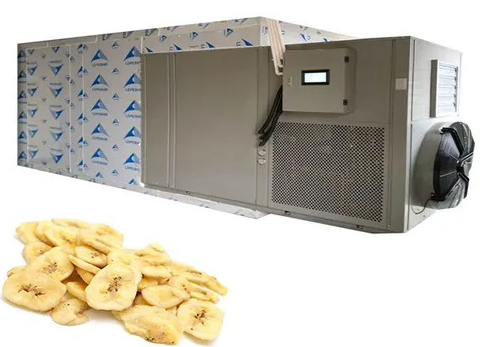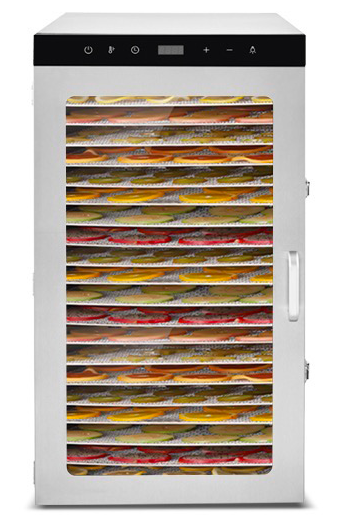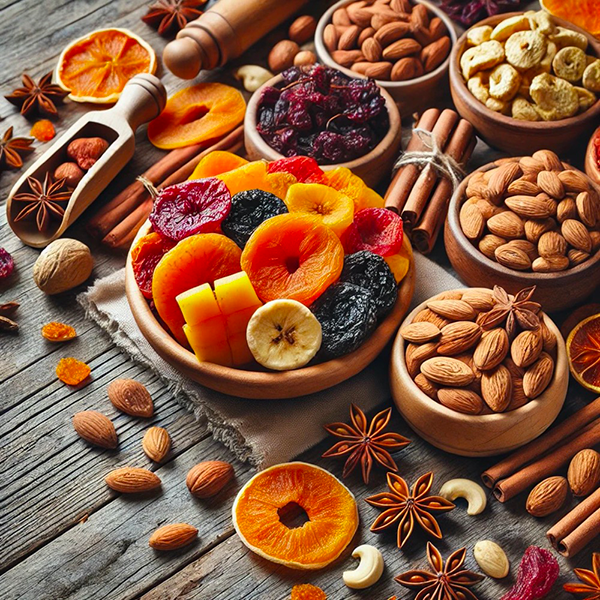
Content Menu
● Understanding Heat Pump Dryers
>> How Heat Pump Dryers Work
● Advantages of Using Heat Pump Dryers
● How Long Does It Take to Dry Food with a Heat Pump Dryer?
>> Factors Affecting Drying Time
● Best Practices for Using Heat Pump Dryers
● Comparing Heat Pump Dryers with Traditional Methods
● Applications of Heat Pump Dryers in Food Processing
● Conclusion
● FAQ
>> 1. What types of food can be dried in a heat pump dryer?
>> 2. How does a heat pump dryer differ from a conventional dehydrator?
>> 3. Can I use a heat pump dryer for bulk drying?
>> 4. What are the maintenance requirements for heat pump dryers?
>> 5. Are heat pump dryers noisy?
Heat pump dryers have become increasingly popular in the food processing industry due to their efficiency and ability to preserve the quality of food during the drying process. This article will explore the workings of heat pump dryers, their advantages, drying times, and how they compare to traditional drying methods. Additionally, we will delve into the best practices for using heat pump dryers, tips for optimizing drying times, and some common applications in the food industry.

Understanding Heat Pump Dryers
Heat pump dryers operate on a unique principle that sets them apart from conventional dryers. They utilize a closed-loop system that circulates air within the drying chamber, allowing for efficient moisture removal without excessive heat. This method is particularly beneficial for drying sensitive food items, as it minimizes nutrient loss and maintains flavor integrity.
How Heat Pump Dryers Work
1. Air Circulation: The dryer draws in ambient air, which is then heated using a compressor.
2. Moisture Absorption: The warm air is blown into the drying chamber where it absorbs moisture from the food.
3. Condensation: After passing through the food, the humid air is cooled, causing moisture to condense and be collected.
4. Reheating: The now drier air is reheated and cycled back into the chamber to continue the drying process.
This cycle allows heat pump dryers to operate at lower temperatures (typically between 30°C to 75°C), making them ideal for delicate foods like fruits, vegetables, and herbs that require gentle handling to retain their nutritional value.
Advantages of Using Heat Pump Dryers
- Energy Efficiency: Heat pump dryers consume significantly less energy compared to traditional dryers. They can save up to 70% on energy costs due to their efficient heat recovery systems.
- Quality Preservation: By operating at lower temperatures, these dryers help maintain the color, flavor, and nutritional content of food products.
- Versatility: Heat pump dryers can be used for a wide range of products including fruits, vegetables, herbs, and even meats.
- Environmentally Friendly: These machines produce less waste and are often designed with sustainability in mind.
- Reduced Operating Costs: Although the initial investment may be higher than traditional drying equipment, the long-term savings on energy bills can make heat pump dryers more cost-effective over time.
How Long Does It Take to Dry Food with a Heat Pump Dryer?
The drying time for food in a heat pump dryer can vary based on several factors including:
- Type of Food: Different foods have varying moisture content and densities which affect drying times.
- Load Size: Larger loads may take longer due to reduced airflow around individual pieces.
- Desired Moisture Level: The target moisture content will also influence drying time; more moisture means longer drying times.
On average, it takes about 6 to 12 hours to dry most fruits and vegetables in a heat pump dryer. For instance:
- Apples may take approximately 6-8 hours.
- Bananas typically require about 8-10 hours.
- Herbs can dry in as little as 4-6 hours depending on their moisture content.
Factors Affecting Drying Time
1. Initial Moisture Content: Foods with higher initial moisture content will naturally take longer to dry. For example, freshly harvested fruits might contain more water compared to those that have been stored for some time.
2. Thickness of Food Slices: Thicker slices or whole pieces of food will require more time than thinner slices because they have less surface area exposed to airflow.
3. Airflow Rate: Proper airflow is crucial for effective drying. If airflow is restricted due to overcrowding or improper loading of the dryer, it can significantly increase drying times.
4. Temperature Settings: While lower temperatures are preferable for preserving quality, they can also prolong drying times. Finding a balance between temperature and efficiency is key.

Best Practices for Using Heat Pump Dryers
To maximize efficiency and ensure optimal results when using heat pump dryers, consider implementing the following best practices:
- Pre-treatment of Food: Some foods benefit from pre-treatment methods such as blanching or soaking in lemon juice to enhance flavor and color retention while reducing drying time.
- Uniform Slicing: Cut food into uniform sizes to ensure even drying. This practice helps prevent some pieces from becoming over-dried while others remain under-dried.
- Avoid Overloading: Do not overcrowd the dryer; allow sufficient space between items for air circulation. This ensures that all pieces receive adequate airflow for efficient drying.
- Regular Maintenance: Keep filters clean and check for any obstructions in airflow paths regularly. Proper maintenance enhances performance and prolongs equipment life.
Comparing Heat Pump Dryers with Traditional Methods
| Feature | Heat Pump Dryer | Traditional Dryer |
| Energy Efficiency | High | Moderate to Low |
| Temperature Control | Precise | Limited |
| Nutrient Preservation | Excellent | Poor |
| Drying Time | Longer (6-12 hours) | Shorter (2-6 hours) |
| Environmental Impact | Low | High |
While traditional dryers may offer quicker results, they often do so at the expense of quality and energy efficiency. The choice between methods should be guided by specific needs regarding product quality and operational costs.
Applications of Heat Pump Dryers in Food Processing
Heat pump dryers are widely used across various sectors in the food industry due to their versatility and efficiency:
- Fruit Processing: Companies use heat pump dryers to create dried fruits like apricots, apples, and raisins that retain their natural flavors and nutrients.
- Vegetable Dehydration: Vegetables such as carrots, peppers, and tomatoes are dried using heat pump technology for use in soups, snacks, or as ingredients in other products.
- Herb Drying: Culinary herbs like basil, oregano, and thyme benefit immensely from heat pump drying as it preserves their essential oils better than conventional methods.
- Meat Dehydration: Some manufacturers utilize heat pump dryers for jerky production where maintaining flavor while removing moisture is crucial.
Conclusion
Heat pump dryers represent a significant advancement in food dehydration technology. Their ability to dry food gently while preserving essential nutrients makes them an excellent choice for manufacturers looking to improve product quality and sustainability. Although they may take longer than traditional methods, the benefits far outweigh the drawbacks when considering energy savings and product integrity. As industries continue to prioritize health-conscious products with minimal processing impact, heat pump dryers are likely to play an even more prominent role in food production processes moving forward.

FAQ
1. What types of food can be dried in a heat pump dryer?
Heat pump dryers can effectively dry a variety of foods including fruits (like apples and bananas), vegetables (such as carrots and tomatoes), herbs, and even meats.
2. How does a heat pump dryer differ from a conventional dehydrator?
A heat pump dryer uses a closed-loop system that recycles air and operates at lower temperatures compared to conventional dehydrators that often rely on high heat which can damage sensitive foods.
3. Can I use a heat pump dryer for bulk drying?
Yes, heat pump dryers are suitable for bulk drying; however, it's essential to ensure proper airflow around each item for optimal results.
4. What are the maintenance requirements for heat pump dryers?
Regular cleaning of filters and ensuring proper airflow are critical maintenance tasks. Additionally, checking refrigerant levels may be necessary depending on usage frequency.
5. Are heat pump dryers noisy?
Most modern heat pump dryers are designed to operate quietly; however, noise levels can vary by model. It's advisable to check specifications before purchase.












